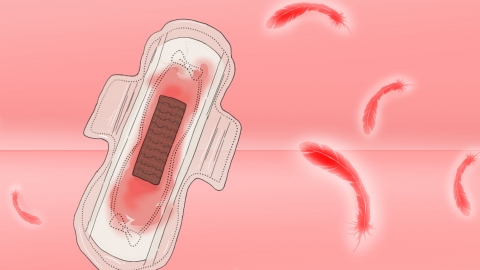Only a few drops of menstrual blood appeared and then it stopped—what could be the reason, and what should I do?
Menstruation usually refers to the menstrual period. In general, if only a few drops of blood appear during menstruation and then stop, it may be caused by excessive emotional fluctuations, extreme dieting for weight loss, endocrine disorders, intrauterine adhesions, or polycystic ovary syndrome (PCOS). It is recommended to seek medical attention promptly, identify the underlying cause, and under a doctor's guidance improve the condition through lifestyle adjustments, medication, or other treatments. Specific causes are analyzed as follows:

1. Excessive Emotional Fluctuations: Sudden stress, anxiety, or emotional breakdown can affect hypothalamic hormone secretion, leading to slight shedding of the endometrium and significantly reduced menstrual flow. Immediate psychological adjustment is recommended—practicing deep breathing, taking short walks, listening to soothing music before bedtime, maintaining regular sleep patterns. Menstrual cycles often return to normal once emotional stability is restored.
2. Excessive Dieting for Weight Loss: Prolonged restrictive dieting leads to inadequate nutrient intake, resulting in insufficient raw materials for estrogen synthesis and poor endometrial proliferation, thereby reducing menstrual volume. Stop extreme dieting and resume a balanced diet rich in protein and iron, such as lean meat, soy products, and spinach. Ensure adequate daily caloric intake to gradually improve overall nutritional status.
3. Endocrine Disorders: Imbalance between estrogen and progesterone may cause either overly rapid repair or insufficient proliferation of the endometrium, resulting in spotting. Follow medical advice to use medications such as estradiol valerate tablets, progesterone capsules, or dydrogesterone tablets to regulate hormone levels and promote normal growth and shedding of the endometrium.
4. Intrauterine Adhesions: Previous abortions or uterine surgeries may damage the endometrium, causing partial adhesions within the uterine cavity and obstructing menstrual blood flow. Hysteroscopic adhesiolysis is required to separate the adhesions. After surgery, follow medical instructions to take medications such as estradiol tablets, cefixime dispersible tablets, and metronidazole tablets to promote endometrial repair and prevent infection.
5. Polycystic Ovary Syndrome (PCOS): Hormonal imbalances lead to elevated androgen levels, abnormal follicular development, thin endometrium, and scanty menstrual flow. Under medical guidance, medications such as ethinylestradiol cyproterone acetate tablets, drospirenone-ethinyl estradiol tablets, or spironolactone tablets may be used to lower androgen levels and regulate the menstrual cycle.
In daily life, avoid raw, cold, spicy, and stimulating foods. Keep the abdomen warm during menstruation. Reduce late-night activities, avoid overexertion, and engage in moderate exercises such as yoga or jogging. Adopting a healthy lifestyle can help regulate endocrine function and improve menstrual health.




